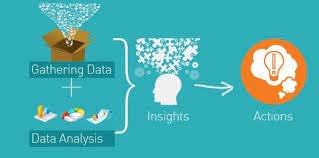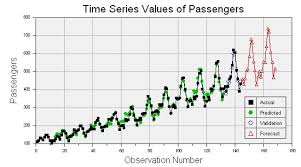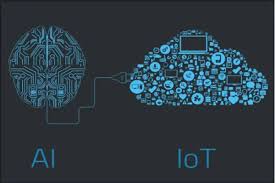The Power of Data Analytics and Insights
In today’s digital age, data plays a crucial role in shaping business strategies and decision-making processes. Data analytics, the process of examining data sets to draw conclusions and identify trends, has become a game-changer for organisations across industries. By harnessing the power of data analytics, businesses can gain valuable insights that drive growth, improve efficiency, and enhance customer experience.
Understanding Data Analytics
Data analytics involves collecting, processing, and analysing vast amounts of data to uncover patterns, correlations, and trends. This process often utilises advanced tools and technologies such as machine learning and artificial intelligence to extract meaningful insights from complex datasets. By applying statistical algorithms and predictive modelling techniques, businesses can make informed decisions based on evidence rather than intuition.
The Benefits of Data Analytics
One of the key benefits of data analytics is its ability to provide actionable insights that drive business performance. By analysing customer behaviour, market trends, and operational metrics, organisations can identify opportunities for growth, optimise processes, and mitigate risks. Data analytics also enables businesses to personalise their offerings, improve marketing strategies, and enhance overall competitiveness in the market.
Challenges and Opportunities
While data analytics offers immense potential for businesses, it also presents challenges such as data privacy concerns, security risks, and the need for skilled professionals to interpret complex datasets. However, with proper data governance practices in place and ongoing investment in training and technology infrastructure, organisations can overcome these challenges and unlock the full potential of their data assets.
The Future of Data Analytics
As technology continues to evolve at a rapid pace, the future of data analytics looks promising. With advancements in artificial intelligence and machine learning algorithms, businesses can expect even more sophisticated insights from their data. The integration of real-time analytics capabilities will enable organisations to make quicker decisions based on up-to-the-minute information.
Embracing Data-Driven Decision Making
In conclusion, data analytics is not just a tool for analysis but a strategic asset that drives innovation and growth. By leveraging the power of data analytics and insights effectively, businesses can stay ahead of the competition, adapt to changing market dynamics, and meet customer expectations with precision. Embracing a culture of data-driven decision-making is essential for success in today’s digital economy.
Understanding Data and Insights: Key Differences, Types, and Roles in Analytics
- What is the difference between data and insights?
- What is the difference between insight and analysis?
- What is data analytics and insights?
- What are the 4 types of data analytics?
- What is the difference between a data analyst and an insights analyst?
What is the difference between data and insights?
Data and insights are often used interchangeably, but they have distinct meanings in the context of data analytics. Data refers to raw facts and figures collected from various sources, such as transactions, customer interactions, or operational metrics. On the other hand, insights are the valuable interpretations and actionable conclusions drawn from analysing data. While data provides the foundation for analysis, insights transform this data into meaningful information that can drive informed decision-making and strategic planning. In essence, data is the starting point, while insights represent the valuable outcomes derived from interpreting and understanding that data in a meaningful way.
What is the difference between insight and analysis?
When discussing data analytics and insights, it is important to distinguish between analysis and insight. Analysis involves the systematic examination of data to understand its underlying patterns and trends. It focuses on processing information to derive meaningful conclusions. On the other hand, insight refers to the valuable understanding or perspective gained from the analysis of data. Insights go beyond raw data interpretation by providing actionable and relevant information that can drive decision-making and strategic planning. In essence, analysis is the process of examining data, while insight is the outcome that leads to informed actions and outcomes.
What is data analytics and insights?
Data analytics and insights encompass the processes of examining and interpreting data to uncover valuable information and trends that can drive informed decision-making and strategic planning within organisations. Data analytics involves the systematic analysis of datasets using various tools and techniques to extract meaningful patterns, correlations, and predictions. Insights derived from data analytics provide businesses with a deeper understanding of their operations, customers, and market dynamics, enabling them to identify opportunities for growth, optimise processes, improve efficiency, and enhance overall performance. In essence, data analytics and insights serve as powerful tools that empower businesses to make data-driven decisions that lead to tangible results and competitive advantages in today’s data-driven world.
What are the 4 types of data analytics?
There are four main types of data analytics: descriptive analytics, diagnostic analytics, predictive analytics, and prescriptive analytics. Descriptive analytics focuses on summarising historical data to provide insights into past performance. Diagnostic analytics delves deeper into the data to understand why certain events occurred. Predictive analytics uses statistical algorithms and machine learning techniques to forecast future trends and outcomes. Lastly, prescriptive analytics goes a step further by recommending actions based on predictive insights to optimise decision-making processes and improve business outcomes. Each type of data analytics plays a unique role in transforming raw data into valuable insights for informed decision-making.
What is the difference between a data analyst and an insights analyst?
A common query in the field of data analytics revolves around distinguishing between a data analyst and an insights analyst. While both roles involve working with data to extract valuable information, they serve distinct purposes. A data analyst primarily focuses on collecting, cleaning, and organising raw data sets to identify trends and patterns. On the other hand, an insights analyst goes a step further by interpreting the analysed data to derive actionable insights that drive strategic decision-making. Insights analysts not only analyse historical data but also forecast future trends and provide recommendations based on their findings, bridging the gap between raw data and strategic business outcomes.






